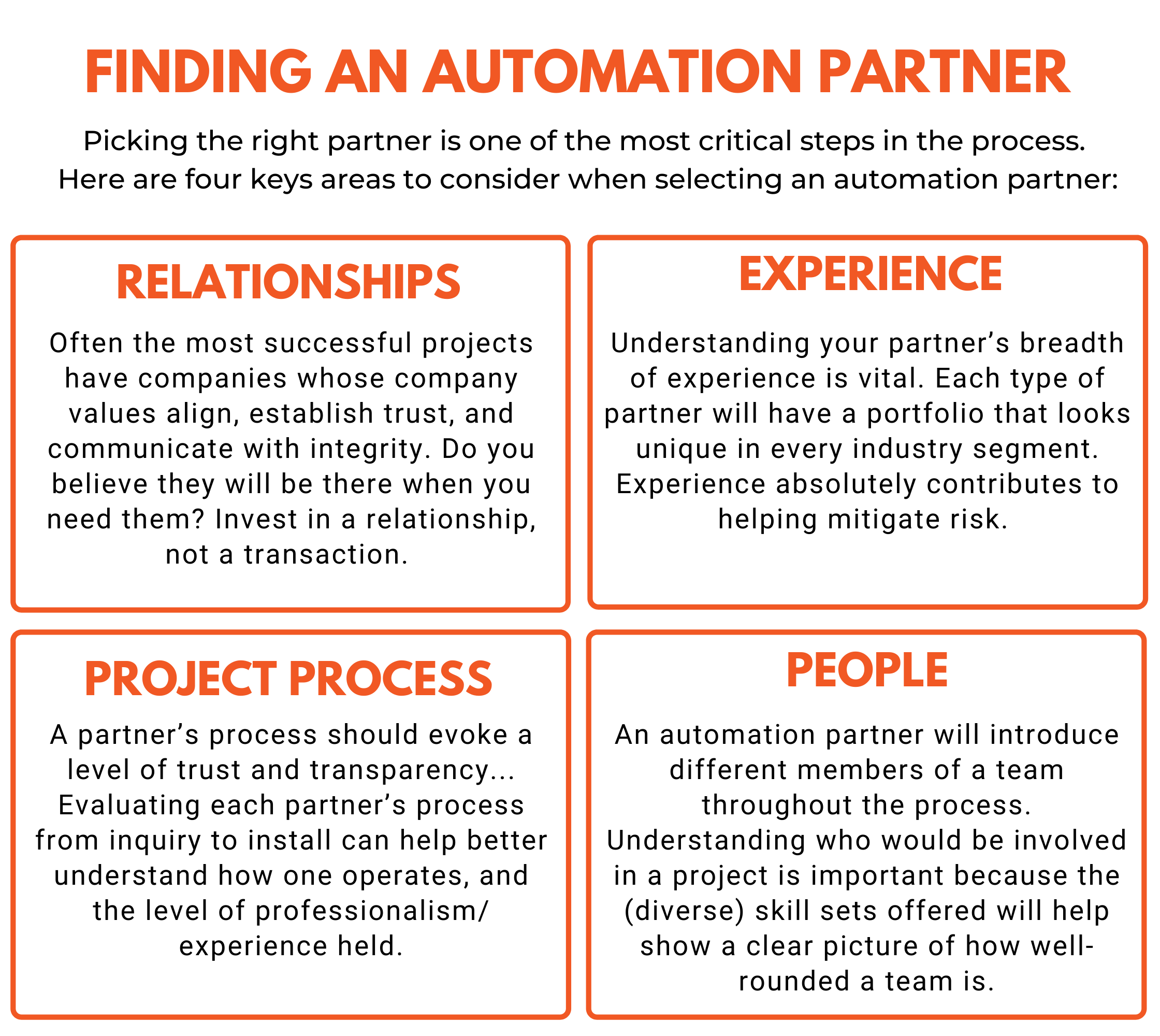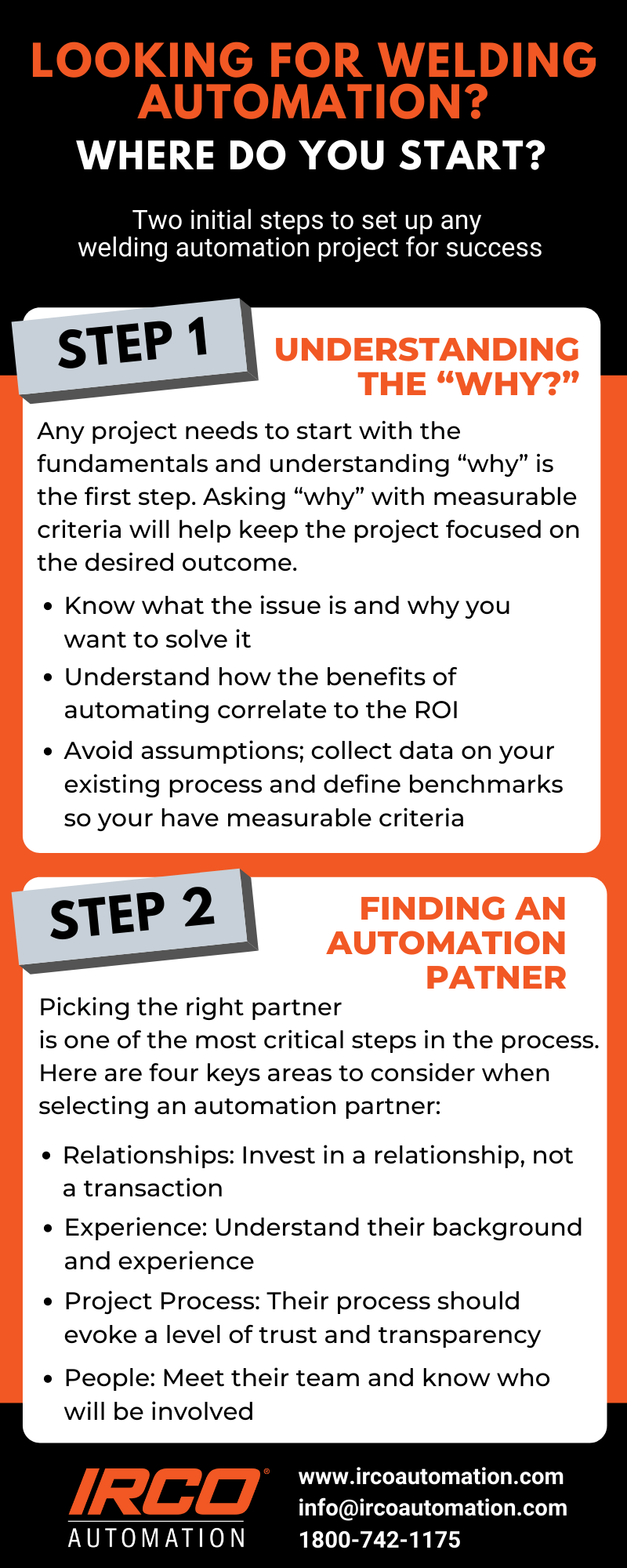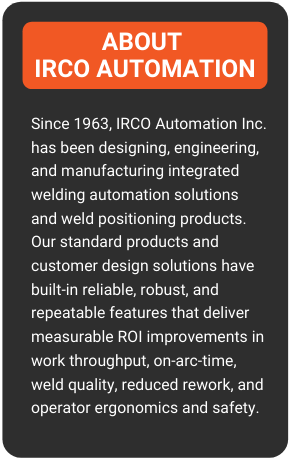Automation can change a business, create new opportunities, and foster growth. However, sometimes the path to automation can be overwhelming. It is important to stay true to the fundamentals. In this post, our guest writer, Jordan, explains two key steps to getting started on the journey to welding automation. Read more below.
Sections:
Looking for Welding Automation? Where do you start?
Introduction:
Welding Automation often is not standard out-of-the-box. Between the welding process, controls, peripheral technology, and material handling, most projects are very dynamic. These types of projects can demand skill sets from manufacturing, weld engineering, mechanical/electrical engineering, PLC controls, and project management. Most people do not have qualifications in all these areas which typically demand a team to bring a project together. So, how do you approach a project? Where do you start? Understandably, this can be a little overwhelming for some companies.
Considering a few key factors and involving the right people it can be simplified. Here we discuss two initial steps to set up any weld automation project for success.
Step 1: Understanding “WHY?” you want to Automate your Welding Process
Any project needs to start with the fundamentals and understanding “why” is the first step. What is the issue? And why is there an attempt to solve it? Welding automation is no different.
What is your reason for automating? What are the greatest challenges that you want to solve? Or what benefits/outcomes do you expect to reach from solving them?
The “why” is typically assessed among the following factors:
- Improving safety/ergonomics
- Improving quality
- Increasing throughput
- Reducing cost
Often these key factors can be overlooked and it is easy to suggest that they all sound fantastic. However, each factor must be evaluated to understand how it correlates to the return on the investment.
When considering “why”, avoid assumptions. The “why” needs to be determined with data. Simply assuming quality needs to be improved or assuming costs need to be reduced is not enough - understand how the numbers are driving the justification for the project. Collect as much data and information from the existing process as possible. This might mean investing in time studies, conducting surveys, and evaluating production reports. Every automation project must be measured for success and that starts with defining a benchmark for the existing process.
If there is not a quantitative reason for “why”, the project is at risk to be either “over” or “under” automated. In other words, when it comes to capital spending, either spending too much or not enough.
Taking a step back, asking “why” with measurable criteria will help keep the project focused on the desired outcome.
Step 2: Finding an Automation Partner
Automation can be daunting, technology is evolving at a pace at which if you do not live it day-to-day, it can be difficult to keep up. Leaning on an automation partner is often the route most manufacturers choose, however picking the right partner is one of the most critical steps in the process.
In welding automation, an automation partner can come in several different forms: Integrators, Weld Distributors, Automation Consultants, and Equipment Dealers. All can add value when it comes to automation. However, the challenge is how to make the right choice?

Here are four keys areas to consider when selecting an automation partner:
Relationships
- The key is finding an automation partner who is invested in building a relationship, interested in learning about the business as a whole, and understanding how the entire manufacturing process comes together.
- Often the most successful projects have companies whose company values align, establish trust, and communicate with integrity. Do you believe they will be there when you need them?
- Invest in a relationship, not a transaction.
Experience
- Understanding your partner’s breadth of experience is vital. Each type of partner will have a portfolio that looks unique in every industry segment. Experience absolutely contributes to help mitigate risk.
- Referrals, Referrals, Referrals, they go a long way, networking within the welding community locally or online can be a powerful resource to help flush out what the experience may be like working with a particular automation partner. Requesting case studies and reviewing online photo/video content is a must, seeing is believing.
- However, keep in mind, it is not uncommon for projects to be protected by agreements so there may be limits as to how much a company can share online. For this reason, requesting a meeting to go over content privately should it be permitted or to discuss previous projects/case studies can give you more information about an automation partner’s background and experience.
Project Process
- The experience of working with one automation partner will be different than working with another. Evaluating each partner’s process from inquiry to installation can help better understand how one operates, and the level of professionalism/experience held. Be sure to ask process-related questions in the evaluation period, it can add valuable insight.
- A proven process not only shows experience, but it helps mitigate risk and captures deliverables. A partner’s process should evoke a level of trust and transparency so that one can step into a project with set expectations on either side and know how to hold each other accountable at each stage in the process.
For example, here's what the typical project journey is like with our team at IRCO Automation. -png.png)
People
- Relationship, experience, and process all involve people, and at the end of the day, the “people part” might be the most influential factor in a decision. An automation partner will introduce different members of a team throughout the process. Understanding who would be involved in a project is important because the (diverse) skill sets offered will help show a clear picture of how well-rounded a team is.
- Take advantage of any opportunities to meet the team members involved. Ask if specific people could be introduced prior to starting and establishing relationships early on., Ask yourself “do they make it easy to do business with them?”
Conclusion:
In welding automation, the stakes are usually high (meaning capital intensive), and not a lot of room for mistakes. Selecting a well-rounded partner over cost is something to always reflect on in the automation world.
Following these initial first steps will help kick start your project and set it up for success.
What's Next?
Ready to get started? Or have specific questions?
Connect with our team about your project by either:
- Filling out this form and providing a few details
- Or, book a phone/video call with one of our welding automation specialists at a time that is most convenient for your schedule
Looking to learn more?
Check out these resources:
- Automated Beam Welding Systems
- Welding Automation - Turn-key Solutions
- Hard vs Robotic Welding Automation - What's the Difference?
- Welding Automation: Myth vs. Reality

.png)


